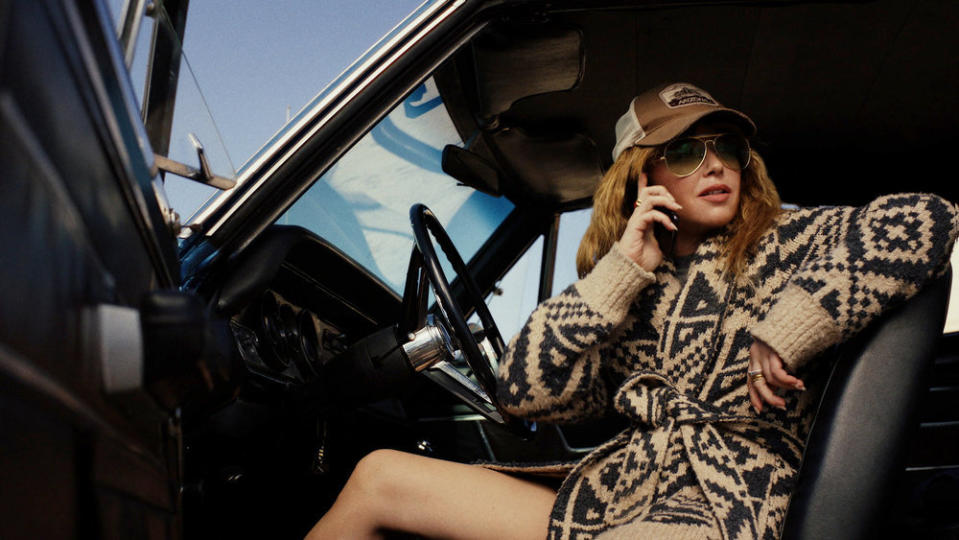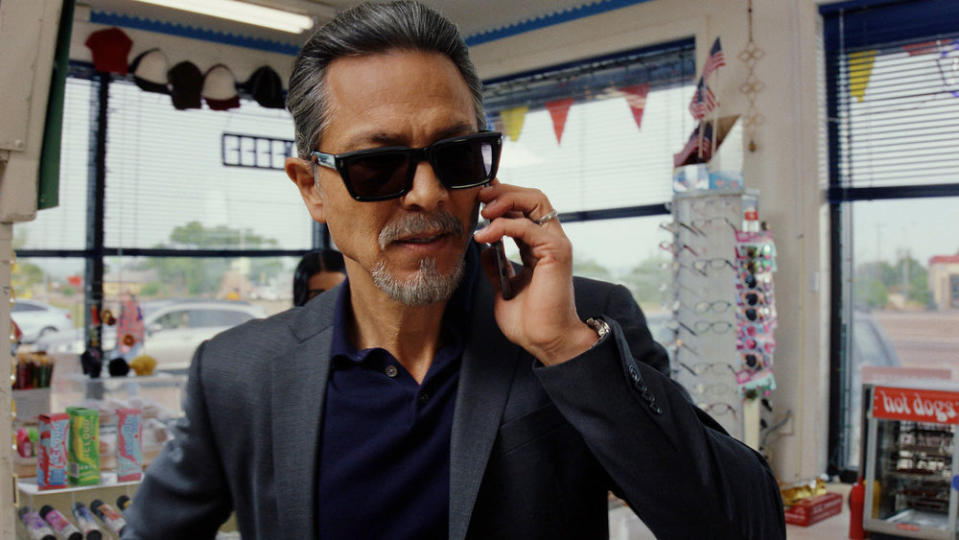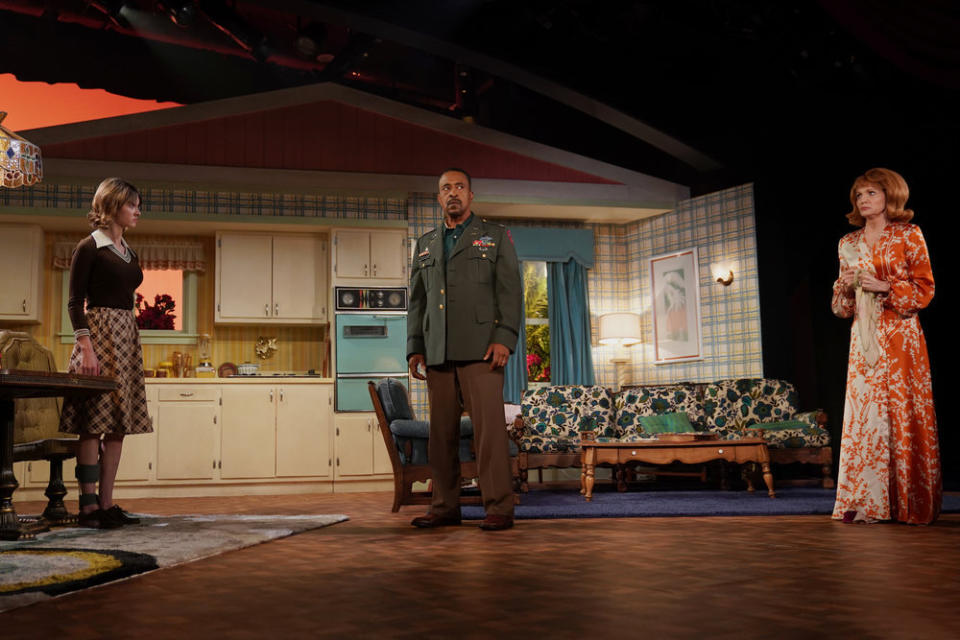‘Poker Face’ Takes Viewers on a Cross-Country Road Trip Without Leaving New York

- Oops!Something went wrong.Please try again later.
- Oops!Something went wrong.Please try again later.
On the run from a ruthless Las Vegas casino owner and his fixer, Charlie Cale (Natasha Lyonne) hits the road and winds up everywhere from the New Mexico desert to Kenosha dive bars in “Poker Face,” using her unerring ability to spot a lie to solve the murders she routinely stumbles into. Peacock’s mystery-of-the-week series did take advantage of the New Mexico sun to shoot Episode 2 and some exterior sequences, but ironically once Charlie hits the road, landing in a new two every week, “Poker Face” itself stayed rooted in upstate New York. That left the burden of turning the Hudson Valley into different states with production designer Judy Rhee.
Rhee disguises the series’ home base into convincing facsimiles of the Southwest, the Rockies, the Midwest, and beyond, but she had little time to do it. “It was actually less than two weeks; it was every 10 days that we were shooting [a new episode],” Rhee told IndieWire. “[And for many] of the locations, we had to modify and build them out to fit the needs of the scripts.”
More from IndieWire
Comedy? Mystery? The Editing Ensures That 'Poker Face' Is Both
Kathleen Kennedy Offers Updates on Rian Johnson and Taika Waititi 'Star Wars' Movies
Each script is set squarely in a specific environment that we see once and then never again, leaving Rhee perpetually scouting and prepping new locations within the Hudson Valley.

Peacock
“We had a few stage builds early on and then continuously throughout the series. Depending on what we needed, we were constantly leap-frogging our builds between two different stages,” Rhee said. “Our stage space was limited, so we also took over a nearby empty event space we turned into a kind of third stage we used regularly to build sets that spatially fit.”
Rhee was tasked with building sets and locations that fit a very particular bill. Not only does everywhere Charlie travel feel like a corner of America tucked just off the interstate, but the series’ production design supports its slightly vintage vibes, evoking detective and murder mystery series of old. The places Charlie travels to are a little bit stuck in time, neither starkly modern nor deliberately period, but a blur of both.
According to Rhee, this mix of temporality in the production design adds authenticity. “While traveling, I’m sure everyone has experienced certain places [that seem] frozen in time,” Rhee said. “A lot of the locations and the environments Charlie Cale finds herself in have a timelessness quality about them, because in reality a lot of small towns and any other places that aren’t metropolitan cities have stayed in various time periods depending on their economic history.”

Peacock
Creating little pockets of America for Charlie to explore started with discussions between Rhee, creator Rian Johnson, showrunners Nora and Lilla Zuckerman, and the directors and the writers of individual episodes, about the sets. Whether it was a matter of building suspense through the sight-lines of the convenience strip in Episode 2 or creating a stuffed dressing room in Episode 6 for Charlie to stash the recorder that catches Kathleen (Ellen Barkin) and Michael (Tim Meadows) in the act, Rhee and her team made sure to emphasize just the right details to get the audience thinking along the same lines as Charlie, but conceal the key clues until each episode is ready to reveal its whodunit. On top of that, Rhee was constantly tweaking visual signifiers that would tell the audience where Charlie is in a given episode.
“You can start with a general direction of a color palette for each location as a visual cue for the journey, but then you have to exemplify the specific place she’s traveled to, like New Mexico, Texas or upstate New York, which all have different landscapes, architecture, vehicles, foliage. Then you have to layer in the details of that specific location in the story,” Rhee said. “The final layer gets determined with set decoration. We had great decorators who were alternating episodes, and they brought a lot to the table based on the research we did and what we wanted to convey [for] each of the new characters.”
Rhee’s distinctive color palettes, regional brands, and building shapes come to wage war against New York state’s particular mix of rolling hills, farms, and lakes. But she and show creator Rian Johnson were also influenced by other looks, too. “I look through a lot of art photography for research as well as historical photographs of a place to understand its history. Rian and I, in our initial interview, discovered we were both fans of Italian Neorealists like Antonioni, so I took inspiration from ‘Red Desert’ and ‘Zabriskie Point’ for some of the episodes. ‘The Last Picture Show’ was an overall reference for Episode 3,” Rhee said. “And, of course, once you start location scouting, you’ll have unexpected ideas of what’s achievable in the available time frame.”

Sara Shatz/Peacock
Sometimes, though, “Poker Face” achieved what an episode needed using stages rather than existing locations. The theater in Episode 6, “Exit Stage Death,” looks like the kind of dinner theater venue that must exist in many areas of the country, but it was actually built entirely on the soundstages that Rhee turned into so many different locations. “We scouted a lot of locations in the Hudson Valley and didn’t find what we were looking for to visually support the story [for Episode 6],” Rhee said. “So we ended up building different sections of the theater. The theater stage, dressing rooms, and hallways were built and modified in the same space we built the casino and crow’s nest in Episode 1. We also built the catwalk portion on our stage for the flexibility of how it needed to be shot.”
The fact that the theater feels like one contiguous space is a credit to Rhee’s speedy design work, none of which was ever wasted as she and her team transformed spaces over and over again. “You’re constantly adjusting as you go along in the process, based on your available resources, like what kind of materials can you get in time and what the crew can achieve for all the episodes we’re working on simultaneously, restrictions of locations. So many factors contribute to the final product,” Rhee said. “It’s kind of a miracle.”
Best of IndieWire
Sign up for Indiewire's Newsletter. For the latest news, follow us on Facebook, Twitter, and Instagram.

